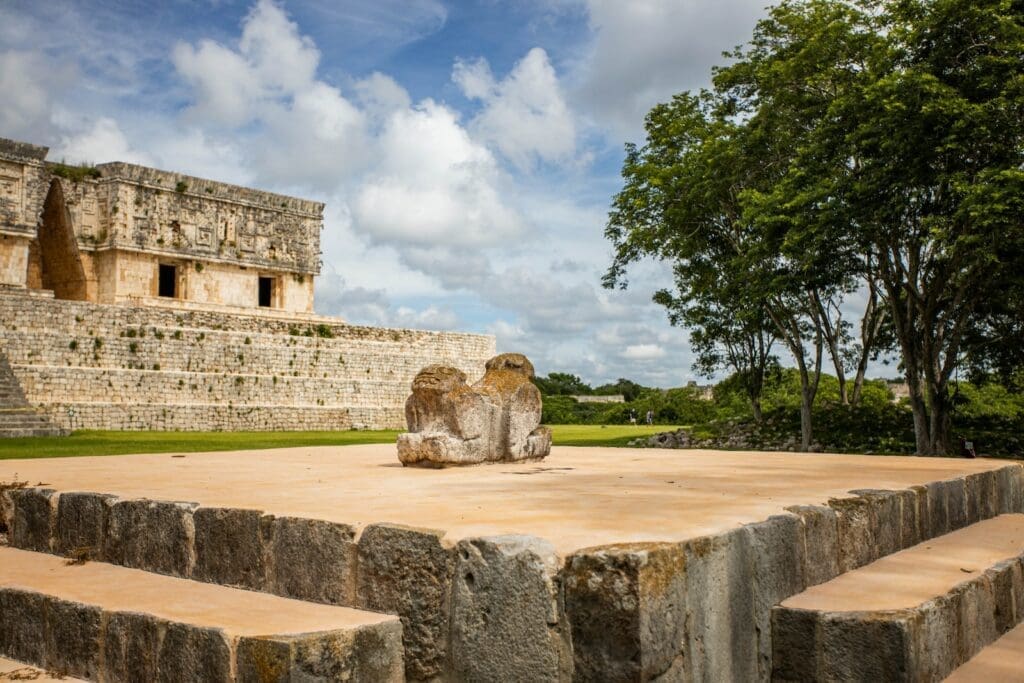
Exploring the Intersection of Ancient Mayans and Contemporary Life
Nestled on the coast of the Yucatán Peninsula, Akumal is a village where the past and present coalesce, offering visitors a rare opportunity to explore the continuum of time. This tranquil locale is not only home to stunning beaches and an array of marine life but also serves as a gateway to the rich heritage of the Maya civilization. Visitors to Akumal can experience a living tapestry that weaves together the threads of history and modern-day culture.
The name Akumal, meaning “Place of the Turtles” in the Mayan language, gives a nod to its deep-rooted history, dating back thousands of years. Ancient Mayan trade routes once crossed through this area, and today, explorers can still catch a glimpse of the magnificent ruins and artifacts that remain. Simultaneously, the village thrives with contemporary Mexican culture, its streets lined with local artisans, vibrant eateries, and welcoming residents, showcasing the evolution of a community that has gracefully adapted over time.
Time traveling in Akumal is not a matter of science fiction; it is an immersive experience. With each step along its sandy shores or each exploration of the nearby Tulum ruins, tourists partake in a chronological journey. They discover the endurance of the Mayan culture and its harmonious blend into the present, where the rituals of the past still resonate amidst the pulse of modern life.
Journey Through Time: The Maya Civilization in Akumal
One can virtually travel back to the time of the Maya civilization when they visit Akumal, nestled in the Riviera Maya. This tranquil spot today once pulsed with the activities of one of the most intricate societies in history.
Akumal’s History:
- Origin: Derived from Mayan words meaning ‘place of turtles.’
- Importance: A vital settlement during the Classic Period of Maya history.
Here, the Mayan civilization thrived, leaving behind evidence of their sophisticated culture. With a history dating back to before the 12th century, Akumal was part of a broader network that spanned across modern-day Mexico, Guatemala, Belize, Honduras, El Salvador, and portions of Chiapas, Tabasco, and especially the rich landscapes of the Yucatán Peninsula.
Maya Advancements:
- Astronomy: Their understanding of cosmic cycles was advanced.
- Architecture: Seen in the ancient ruins that dot the Southern Mexico landscape.
- Agriculture: They utilized the land efficiently, contributing to their long-lasting presence.
Akumal itself is a mirror to the past where one can witness the remnants of Mayan influence in its proximity to important historical sites like Tulum, an enduring fortress symbolizing Maya endurance and ingenuity.
Modern Akumal:
- Culture: Retains a deep connection to its Maya roots.
- Location: On the Caribbean coastline of Mexico, in the heart of Maya territory.
Visitors to Akumal experience a living tapestry of history woven through the enduring heritage of the Maya civilization. It’s a perfect place to appreciate not just the picturesque beaches but also the rich tapestry of time that the Maya have left behind.
Exploring Akumal’s Cultural Tapestry
Akumal boasts an intricate cultural mosaic that weaves together the ancient Mayan heritage and vibrant traditions forged through history. Here, travelers can witness the enduring legacy of Mayan culture and its transformation over centuries.
From Sacred Rituals to Modern Festivities
Akumal has been a cultural crossroads since the time of the Maya, who performed sacred rituals that have evolved into the colorful festivities enjoyed by modern visitors. Cenotes, natural sinkholes considered gateways to the underworld by the Maya, function as stunning venues for contemporary social and religious gatherings. Daykeepers, contemporary Mayan spiritual guides, still hold ceremonies paying homage to ancient practices. Travelers venturing to Akumal during special celebrations can immerse themselves in a culture that seamlessly blends pre-Columbian traditions with Spanish influence, gaining an appreciation for the enduring resilience of indigenous people.
The Evolution of Language and Writing
The fascinating evolution of Mayan language and writing systems is a testament to the intellectual prowess of the Maya. What began as hieroglyphs etched in stone has survived, particularly in the form of Yucatec, one of the Mayan languages still spoken today. Post Spanish Conquest, these languages experienced significant changes, incorporating Spanish words and evolving under the influences of Mexico’s diverse linguistic landscape. Enthusiastic about preserving their heritage, some local communities continue to teach and promote Mayan culture through the study of classical scripts and modern dialects, keeping this aspect of history alive and accessible.
Akumal Today: Where History Meets the Sea
Situated on the Yucatán Peninsula, Akumal is a small yet vibrant embodiment of Mexican culture, where the past and present merge seamlessly and the conservation of nature, especially sea turtles, is as vital as ever.
Conservation: Saving Akumal’s Sea Turtles
Akumal, meaning “Place of Turtles” in Mayan, remains true to its name as it comes alive with the nesting of these ancient creatures. The beaches here serve as crucial nesting grounds for sea turtles, and local conservation efforts ensure that these species continue to thrive. Numerous activities are centered around the turtles, offering visitors a chance to engage with wildlife while learning about the importance of preservation.
- Nesting Season: Visitors are encouraged to watch but keep a respectful distance.
- Conservation Programs: Support the protection of turtle habitats and educate tourists.
Akumal’s Living Legacy: Tourism and Education
The tiny fishing village has transformed into a hub of Riviera Maya’s tourism, with educational experiences deeply rooted in the Mayan legacy. While snorkeling in the clear waters of Akumal Bay or exploring nearby cenotes like Xel-Há, one can witness the rich tapestry of wildlife beneath the waves. Informational placards and guided tours shed light on the cultural significance of these waters.
- Educational Tours: Learn about Mayan history and Mexican culture.
- Interactive Museums: They bridge the gap between modern visitors and ancient traditions.
By visiting Akumal, one steps into a world where history is continuously interwoven with the fabric of today’s Mexican lifestyle, offering a unique experience that honors both its heritage and natural wonders.